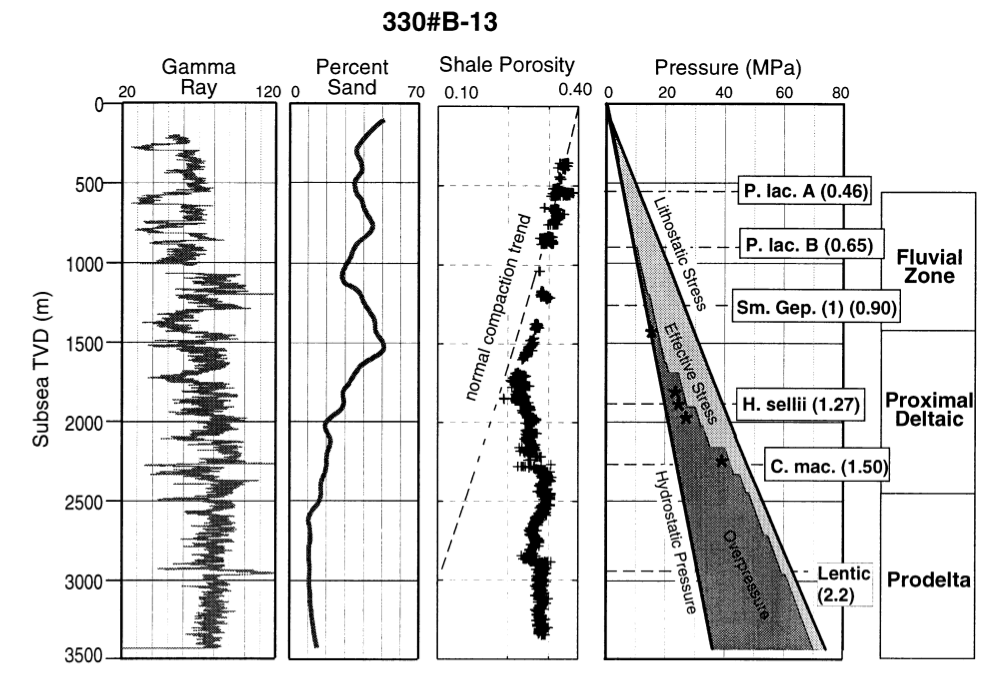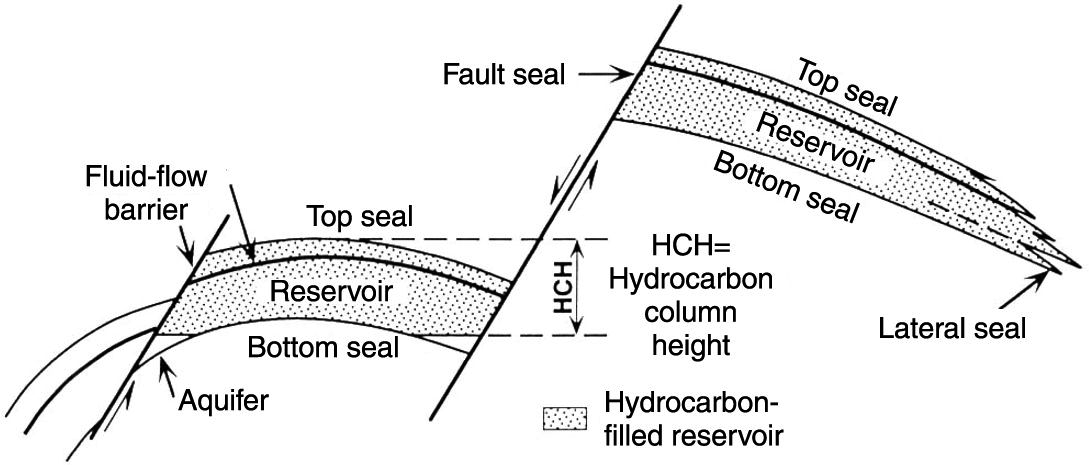Mechanisms of overpressure¶
Disequilibrium compaction¶
- Ongoing sedimentation increases overburden (vertical stress) faster than fluid diffuses out of zone
Characteristic time of diffusion in porous medium¶
$${}$$$$ \tau = \frac{(\phi \beta_f + \beta_r) \eta l^2}{k} $$- low-permiability sand (~1 md)
- $\tau$ on the order of years for $l=0.1$km
- low-permiability shale (~10 nd)
- $\tau$ on the order of 100,000 years for $l=0.1$km
Techtonic compaction¶
${}$
- Occurs in areas where large-scale tectonic stress changes occur over geolocgically short periods of time.
Hydrocarbon column heights¶
${}$
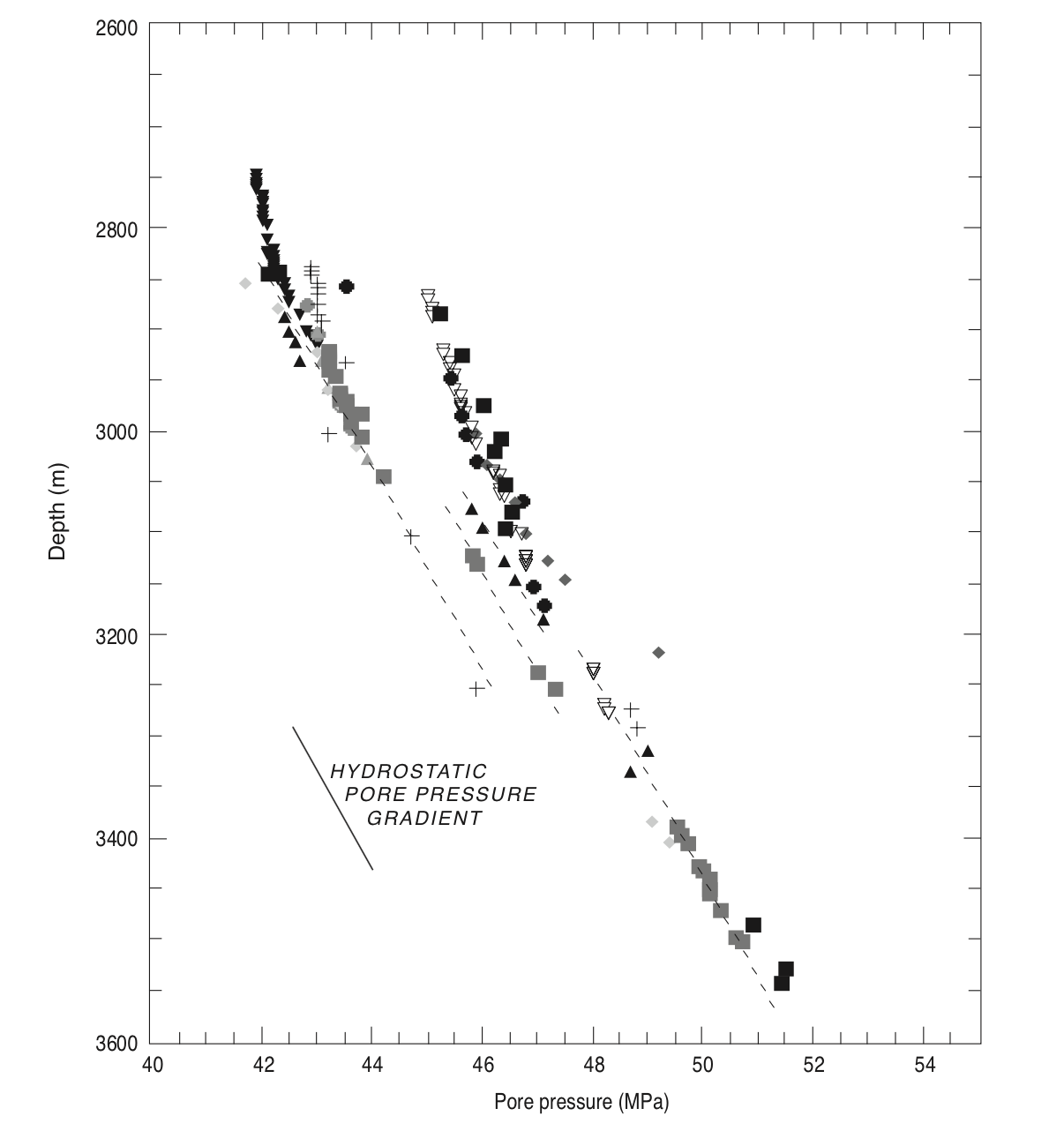
© Cambridge University Press Zoback, Reservoir Geomechanics (Fig. 2.11, pp. 42)
Centroid effects¶
${}$
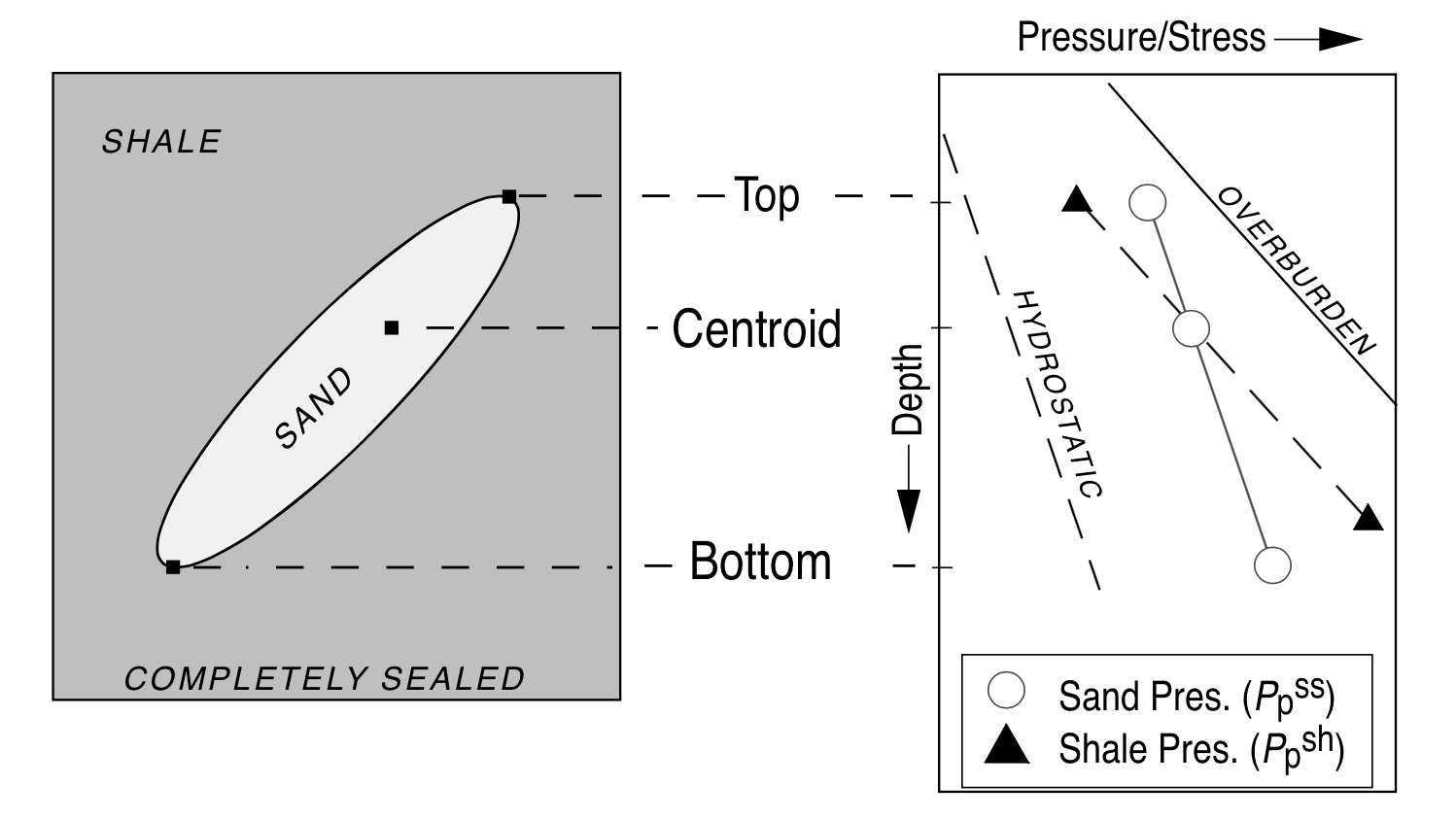
© Cambridge University Press Zoback, Reservoir Geomechanics (Fig. 2.12, pp. 43)
Direct measurement of pore pressure¶
- Via wireline samplers that isolate formation pressure from annular pressure in a small area at the wellbore wall.
- Mud weight
Estimation of pore pressure at depth¶
Confined compaction experiment¶
${}$
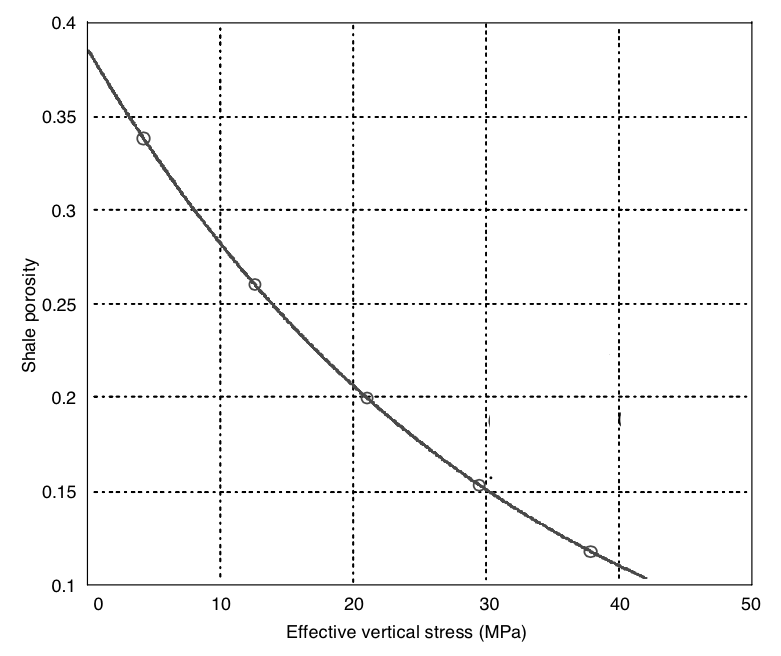
© Cambridge University Press Zoback, Reservoir Geomechanics (Fig. 2.13, pp. 46)
Use with caution!¶
${}$
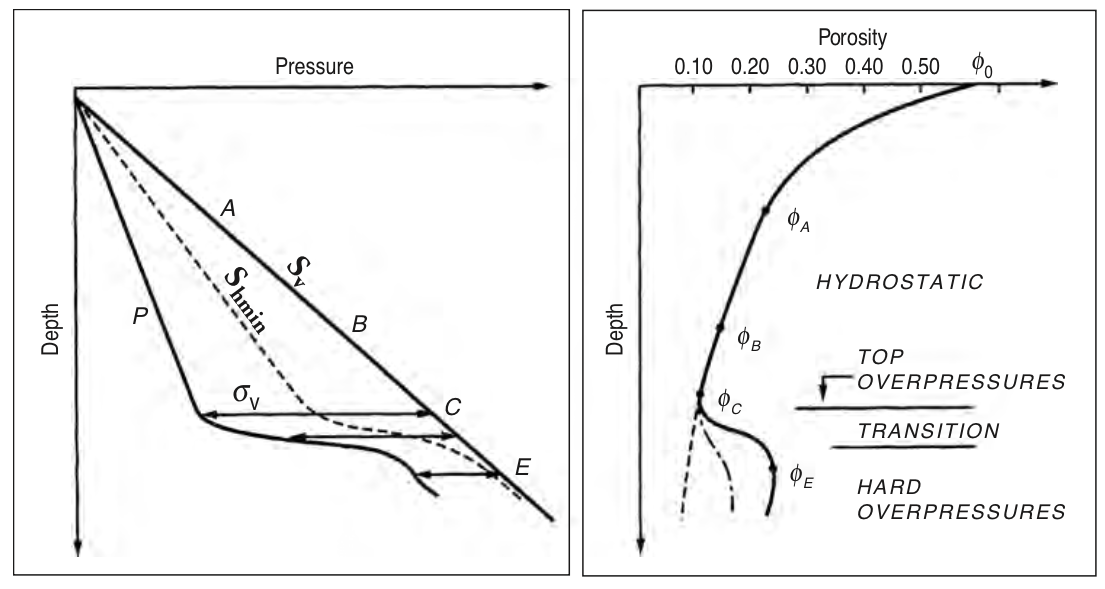
© Cambridge University Press Zoback, Reservoir Geomechanics (Fig. 2.14, pp. 48)
Porosity inference from $P$-waves¶
${}$
$P_p = S_v + \left(\frac{1}{\beta} \ln\left(\frac{\phi}{\phi_0}\right)\right) \quad \quad \phi = 1 - \left(\frac{\Delta t_{ma}}{\Delta t}\right)^{\frac{1}{f}}$
 |
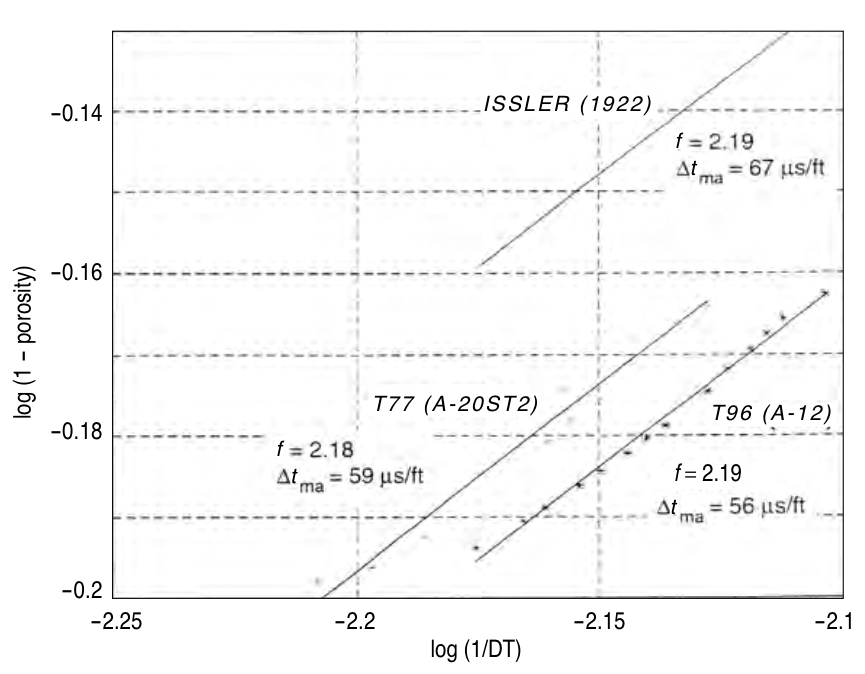 |
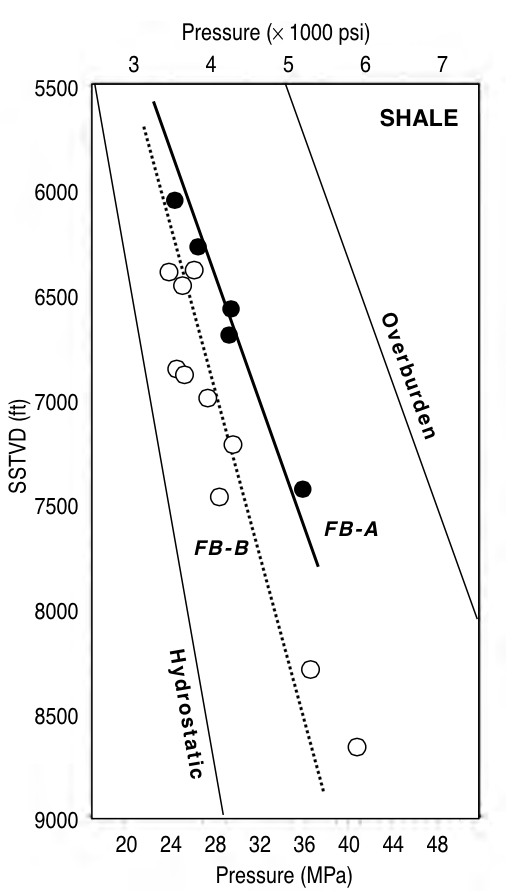 |
| Compaction | $P$-wave | Pore pressures |
© Cambridge University Press Zoback, Reservoir Geomechanics (Figs. 2.16a,b, pp. 48, Fig. 2.8b, pp. 36)
